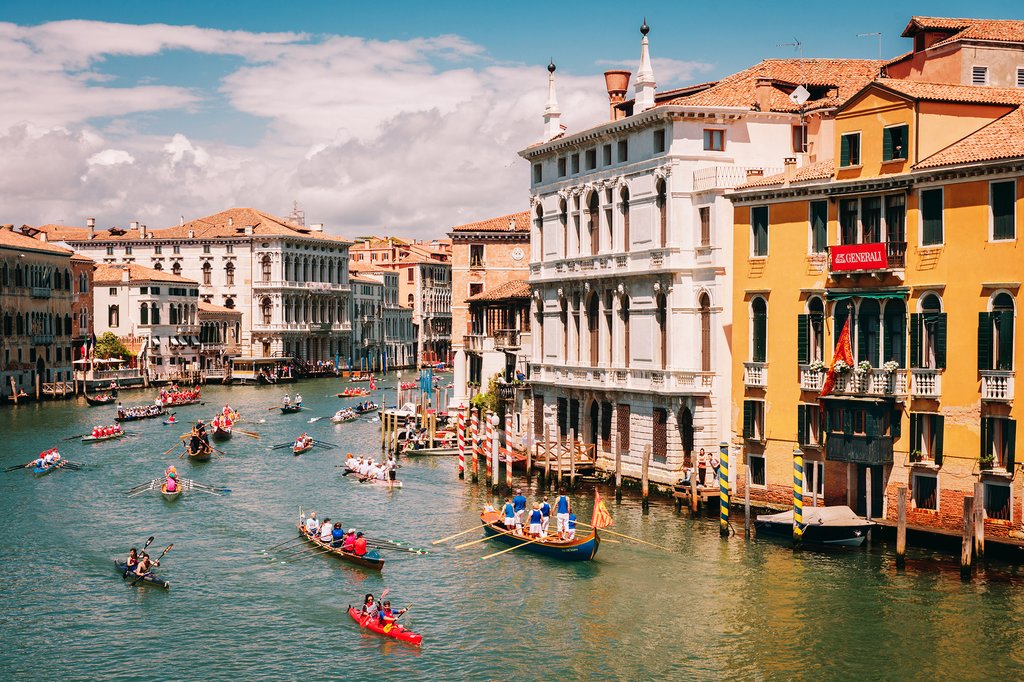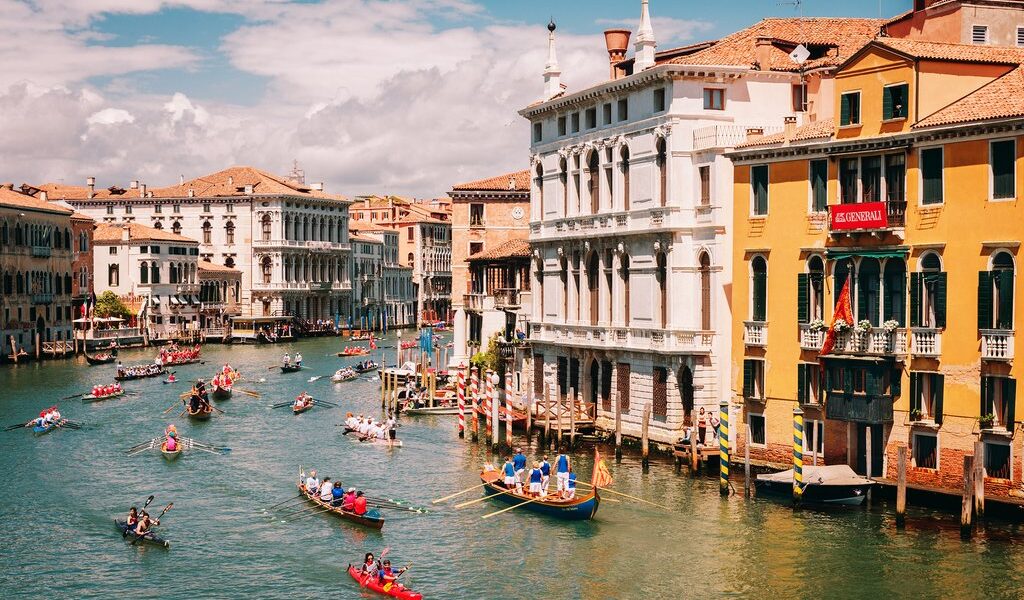
Venice is one of the most popular destinations on Earth, with a well-developed hospitality industry that goes back to the early 1800s. It can seem like the city is little more than a giant museum where visitors far outnumber the locals, but it’s surprisingly easy to lose the crowds. Indeed, getting off the beaten path is the best way to appreciate the enduring charm of “La Serenissima”—find out how below.
## Unveiling the Hidden Charms of Venice: A Journey Beyond the Tourist Trail
Venture beyond the well-trodden paths of Venice and discover a city brimming with secrets, untold stories, and captivating experiences. This curated list takes you to lesser-known locations, unveils unique activities, and spans the entire Venetian realm, from the central city archipelago to the serene outer islands. Accessibility is key – each destination can be reached either by a leisurely stroll or a convenient ride on the ubiquitous water bus. Prepare to be enchanted by a side of Venice that most visitors never see.
## Embrace the Dawn on Isola di San Michele
Imagine Venice stirring to life, before the crowds descend and the canals bustle. On Isola di San Michele, tranquility reigns supreme in the early morning hours. A brief water bus journey transports you from the heart of Venice to this serene island, which has served as the city’s cemetery since 1807. Enclosed by imposing walls and adorned with surprisingly lush, park-like grounds—a rare sight in Venice—the atmosphere is undeniably captivating. You’ll likely find yourself in peaceful solitude, accompanied only by the occasional groundskeeper tending to the flora or a solitary mourner paying their respects. Take a moment to reflect at the final resting places of literary and artistic giants: Ezra Pound, the influential modernist poet; Joseph Brodsky, the Nobel laureate poet and essayist; Igor Stravinsky, the groundbreaking composer; and the legendary Russian ballet impresario Sergei Diaghilev, whose tomb is often adorned with ballet shoes, a testament to his enduring legacy. The early morning light casts an ethereal glow on this poignant island, offering a unique and unforgettable Venetian experience.
## Discover the Sanctuary of San Lazzaro
Escape the vibrant energy of central Venice with a boat journey to San Lazzaro degli Armeni (“Saint Lazarus of the Armenians”), a diminutive island steeped in history and culture. The island’s defining feature is its Mekhitarist monastery, home to the Mekhitarists, an Armenian Catholic congregation. The Armenian connection provides a fascinating perspective on Venice’s multicultural past, offering a glimpse into the enduring contributions of this community. Beyond the monastery’s historical significance, explore the meticulously maintained gardens, a peaceful oasis where you can wander amidst fragrant flowers and tranquil greenery. Be sure to visit the “Lord Byron Room,” a space dedicated to the renowned Romantic poet. Here, in 1816, amidst the allure of Venice, Lord Byron sought refuge and dedicated himself to his studies, perhaps finding inspiration amidst the city’s beauty and, of course, its infamous romantic entanglements.
## Master the Art of Venetian Rowing
Immerse yourself in Venetian tradition by learning to row like a true local. Forget gondolas for a moment – here’s your chance to learn the art of standing-up rowing with Row Venice. Their 90-minute lessons provide an authentic experience, conducted in traditional, hand-built “shrimp-tail” boats, also known as batellina. Under the guidance of experienced instructors, you’ll discover the unique techniques and nuances of this time-honored skill. While the allure of rowing a real gondola is undeniable, the path to becoming a gondolier is a demanding one. It requires obtaining a license from the local guild, dedicating 400 hours to rigorous training, passing a comprehensive exam on Venetian history, and demonstrating fluency in the Italian language. Learning to row the Venetian way is not just a fun activity; it’s a tangible connection to the city’s rich maritime heritage.
## Wander Through the Historic Greek Quarter
Delve into Venice’s cosmopolitan past with a visit to its historic Greek Quarter. Once a thriving hub of Greek culture and commerce, this area retains its unique character, centered around the magnificent church of San Giorgio dei Greci. From the exterior, the church presents a classic Venetian baroque facade, complete with a slightly unsettling, off-kilter bell tower that adds to its charm. However, stepping inside reveals a world apart – a sanctuary of Greek Orthodox tradition. The interior is dimly lit, creating an atmosphere of reverence, with soaring vaults, an altar adorned with gold-lacquered icons, and breathtaking Byzantine mosaics that shimmer with artistry. Adjacent to the church, the Museo delle Icone houses a dazzling collection of medieval Byzantine-style icons, offering a deeper appreciation of the artistic and spiritual heritage of the Greek community in Venice.
## Drift Off to Sleep on a Yacht
For a truly unique Venetian experience, consider spending your nights on the “boat hotels” of Marina Sant’Elena. Situated at the eastern edge of Venice, this neighborhood offers a tranquil escape from the bustling tourist areas. While still conveniently located near the main attractions, Marina Sant’Elena maintains a low-key, residential atmosphere, with a scattering of local restaurants and bars where you can mingle with residents. Experience the allure of “Boat and Breakfast” accommodation, available at reasonable rates on a selection of luxurious yachts. Imagine drifting off to sleep with the gentle lapping of the lagoon beneath you, and waking to breathtaking waterfront views. Consider a stay on a luxurious yacht and experience the ultimate in Venetian relaxation, lulled to sleep by the gentle rocking of the water.
## Explore the Serenity of San Pietro di Castello
Escape the throngs of tourists and discover the tranquility of San Pietro di Castello, a small island connected to the main part of Venice by two bridges. Despite its proximity, this island feels like a world apart, offering a glimpse into a more authentic Venetian life. The island’s centerpiece is the immense Basilica di San Pietro di Castello, which served as the city’s cathedral for centuries, with its origins dating back to the 8th century. While the basilica’s interior may appear relatively bare compared to other Venetian churches, it houses remarkable treasures, including “St Peter’s Throne,” which incorporates an ancient Arab funeral stele adorned with inscriptions from the Koran. Admire Pietro Liberi’s vivid depiction of “The Plague of Serpents” and marvel at a fragment of an ancient Roman mosaic that embellishes the Lando Chapel. A visit to San Pietro di Castello offers a serene and enriching experience, far removed from the tourist crowds.
## Paddle Through the Lagoon by Kayak
Embark on an unforgettable adventure by kayaking through the Venetian Lagoon. Venice Kayak provides the opportunity to paddle along the iconic Grand Canal, or for a more immersive experience, embark on a full-day excursion around the Venetian Lagoon, exploring the charming islands of Burano and Torcello. As you paddle through the waterways, you’ll be amazed at how quickly you leave the city’s hustle and bustle behind, entering a world of serene beauty and natural wonder. Kayaking through the remaining marshes and mudflats of the lagoon provides a unique perspective on Venice, highlighting the remarkable feat of engineering and resilience that allowed the city to be built on these low-lying islands.
## Craft Your Own Carnival Mask
Unleash your creativity and immerse yourself in Venetian tradition by taking a course on carnival mask making from a local master artisan. Carnevale, the city’s vibrant carnival celebration, has been a major event in Venice for centuries, with masks playing an integral role since their emergence around the 13th century. Originally used by Venetians to conceal their identities during illicit parties, ornate, hand-made masks have become a cherished symbol of Venetian culture and a staple of the tourist trade. Various tour companies offer hands-on classes where you can learn the art of creating your own papier-mâché mask, or participate in decoration classes, where you’ll learn to adorn a pre-made mask with paints, feathers, and other embellishments. Creating your own carnival mask is not just a fun activity; it’s a tangible connection to Venice’s rich artistic heritage and festive traditions.
## Embark on a Literary Pilgrimage
Follow in the footsteps of literary giants and embark on a pilgrimage through Venice’s literary landscape. Over the centuries, Venice has served as a muse for countless writers, leaving behind a rich tapestry of stories and inspiration. Look for an ornate plaque at the gates of the Arsenale, commemorating its prominent appearance in Dante’s Inferno. Pay homage to Doge Cristoforo Moro, believed by some to be the inspiration for Shakespeare’s Othello, at his burial place in the San Giobbe church. Legend has it that Desdemona resided at the Palazzo Contarini Fasan, adding another layer of intrigue to your literary exploration. Visit the Palazzo Centanni, the birthplace of the renowned playwright Carlo Goldoni in 1707, now a small museum dedicated to his life and works. Seek out the small plaque overlooking Ponte dei Fuseri, commemorating Goethe’s brief but impactful stay in Venice (“Goethe lived here 28 Sept-14 Oct 1786”). Discover the former lodgings of Lord Byron at the Palazzo Mocenigo, where a plaque facing the Grand Canal commemorates his time in the city (best viewed from the water). Finally, visit the Ca’ Rezzonico, now a museum, where the Victorian poet Robert Browning passed away in 1889, marked by a plaque on the side wall (“Open my heart and you will see, graved inside of it, Italy”).
Legend suggests that Henry James found inspiration for the gardens of Palazzo Soranzo Cappello when writing The Aspern Papers. Make time to visit Harry’s Bar, where you’ll discover the table that Ernest Hemingway frequented. Finally, pay your respects to writers and long-time Venetian residents Ezra Pound and Joseph Brodsky, both buried on the aforementioned San Michele.
B-1410

